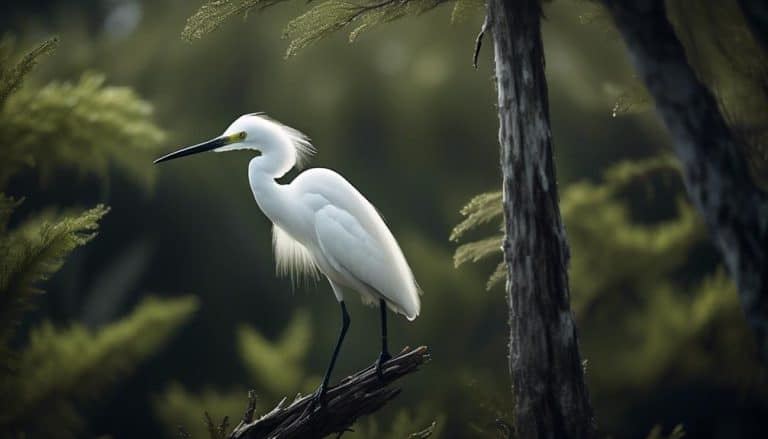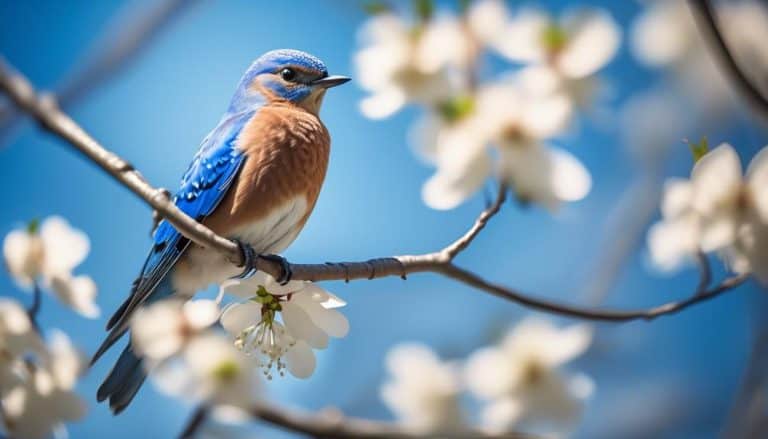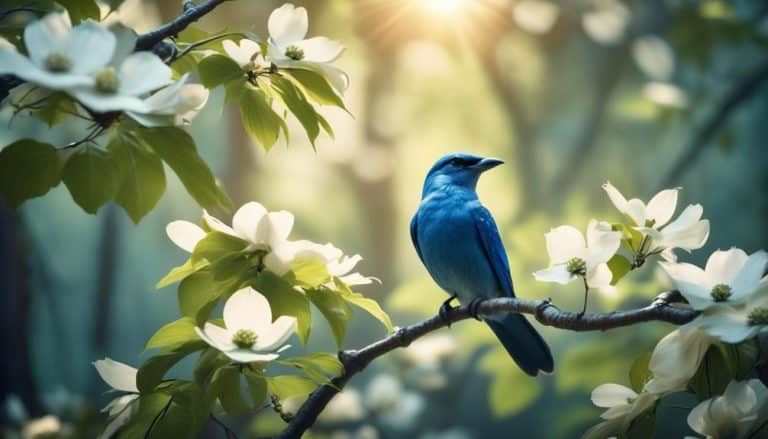Have you ever wondered about the vibrant red birds that grace the skies of Michigan? They are a captivating sight, but there is much more to them than meets the eye.
In this discussion, we will explore the common red birds found in Michigan, their unique characteristics, the habitats they prefer, and their migration patterns. Additionally, we will delve into the conservation efforts aimed at protecting these beautiful creatures.
So, let's embark on a journey to uncover the secrets of the red birds in Michigan and discover why they are such an integral part of our natural world.
Common Red Birds in Michigan
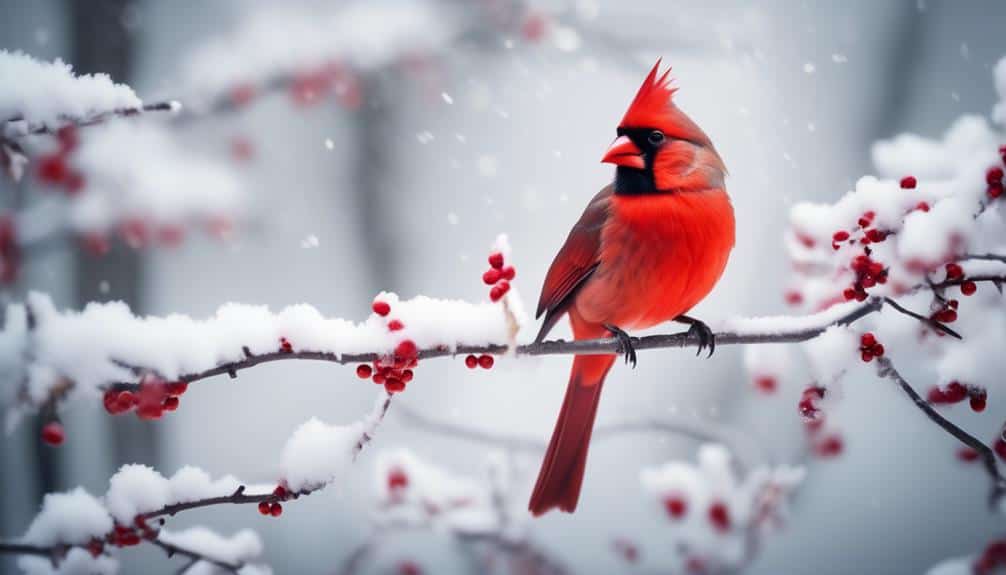
In Michigan, there are several common red birds that can be found throughout the state. These vibrant avian species contribute to the rich biodiversity of Michigan's bird population.
One of the most prevalent red birds in Michigan is the Northern Cardinal (Cardinalis cardinalis). With its stunning red plumage, the Northern Cardinal is easily recognizable and a favorite among birdwatchers. This species can be found in various habitats, including woodlands, gardens, and urban areas.
The red bird population in Michigan also includes the Scarlet Tanager (Piranga olivacea). Although primarily found in the state's southern regions, this migratory species adds a splash of color to Michigan's forests during the breeding season. The male Scarlet Tanager presents a striking appearance with its bright red plumage contrasting against black wings.
When it comes to red bird behavior, both the Northern Cardinal and the Scarlet Tanager are known for their distinctive vocalizations. The Northern Cardinal's song is a series of clear, whistled notes, often described as sounding like 'cheer, cheer, cheer.' On the other hand, the Scarlet Tanager's song is a rich, melodious warble that echoes through the trees.
Observing these common red birds in Michigan provides a wonderful opportunity to appreciate the beauty and diversity of the avian world. Whether it's the vibrant red plumage or their captivating songs, these birds add a touch of brilliance to Michigan's natural landscapes.
Characteristics of Red Birds in Michigan
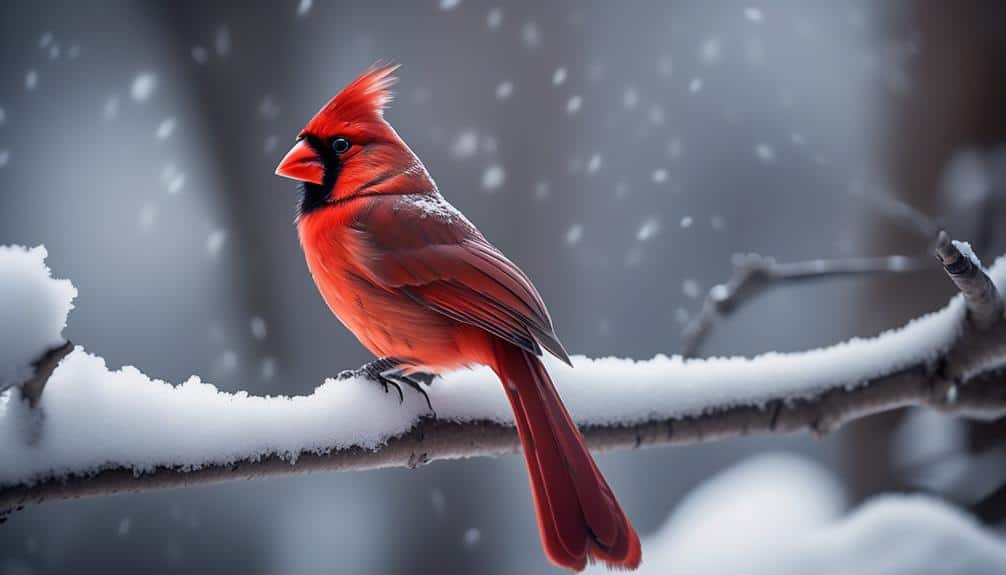
Red birds in Michigan possess distinctive characteristics that contribute to their vibrant appearance and unique behaviors. These characteristics play a significant role in their behavior and population trends.
- Brilliant plumage: Red birds in Michigan, such as the Northern Cardinal and Scarlet Tanager, exhibit stunning red plumage that stands out among the green foliage. This vibrant coloration serves as a visual signal to attract mates and establish territory.
- Melodious songs: Red birds are known for their beautiful and melodious songs, which can be heard throughout Michigan's forests and parks. Their songs serve multiple purposes, including attracting mates, defending territory, and communicating with other individuals.
- Year-round residents: Many red bird species, such as the Northern Cardinal, are non-migratory, meaning they reside in Michigan year-round. This behavior allows them to adapt to Michigan's climate and take advantage of available food sources even during harsh winters.
- Stable populations: Red birds in Michigan have generally seen stable population trends over the years. Conservation efforts, such as protecting their habitats and providing food sources, have contributed to their population stability. However, continuous monitoring is essential to ensure their long-term survival.
Understanding the characteristics and behaviors of red birds in Michigan is crucial for conserving these iconic species and maintaining their populations for future generations to enjoy.
Red Bird Habitats in Michigan

As we explore the habitats of red birds in Michigan, it becomes evident that their vibrant plumage and unique behaviors are closely tied to the diverse ecosystems they inhabit. The red bird population in Michigan is primarily found in forests, woodlands, and shrubby areas. These habitats provide the necessary resources for their survival and reproduction.
Red birds prefer nesting sites that offer protection and seclusion. They often choose dense vegetation, such as thickets or shrubs, to build their nests. These sites offer shelter from predators and provide a safe environment for raising their young. Additionally, red birds are known to utilize tree cavities for nesting. They take advantage of natural tree hollows or abandoned woodpecker nests.
In Michigan, the red bird population thrives in areas with a mixture of open spaces and dense vegetation. This allows them to have access to both food sources and suitable nesting sites. The presence of fruit-bearing trees and shrubs is particularly important as it provides them with a reliable food source throughout the year.
Understanding the specific habitats preferred by red birds is crucial for their conservation. By preserving and maintaining these habitats, we can ensure the continued success of the red bird population in Michigan.
Migration Patterns of Red Birds in Michigan
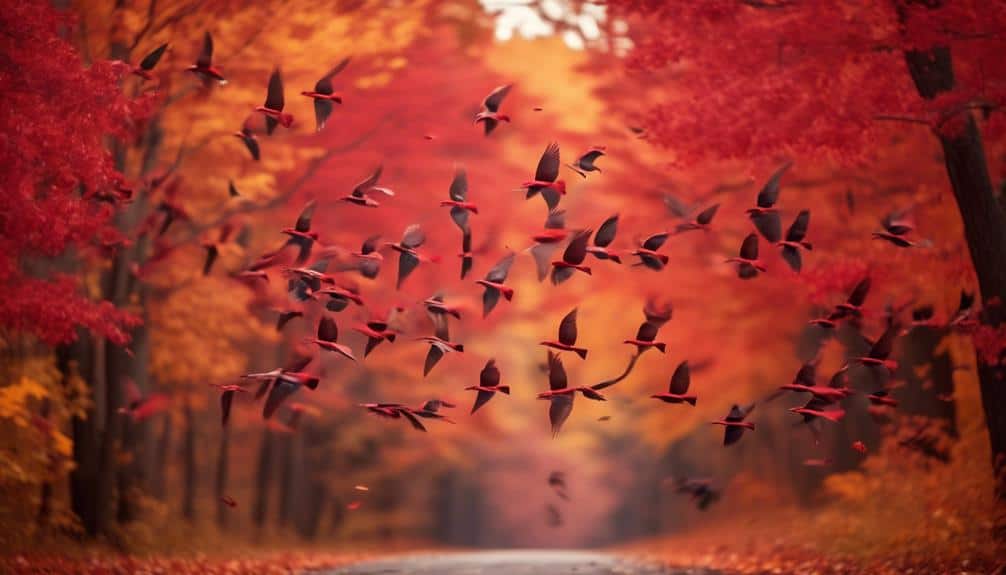
The annual migration of red birds in Michigan brings about significant changes in their behavior and distribution. As a passionate birdwatcher, I've observed and studied these migration patterns for years. Here are four fascinating facts about the migration of red birds in Michigan:
- Timing: Red birds in Michigan typically begin their migration in late summer or early fall. They travel south to escape the harsh winters and return in the spring when the weather becomes favorable again. This regular pattern allows birdwatchers to anticipate and plan their activities accordingly.
- Flyways: Michigan is located in the Central Flyway, one of the major routes used by migratory birds. Red birds follow this flyway, which stretches from Canada to Mexico, providing them with suitable stopover habitats along the way. This makes Michigan a prime location for birdwatching activities during migration seasons.
- Climate Change Impact: Climate change affects the migration patterns of red birds in Michigan. Rising temperatures and altered weather patterns can influence the timing and routes of migration. Some red birds may arrive earlier or later than usual, disrupting their natural rhythms. Birdwatchers play a crucial role in monitoring these changes and collecting data to better understand the impact of climate change on bird populations.
- Conservation Efforts: Understanding the migration patterns of red birds in Michigan is vital for conservation efforts. By studying their routes and behavior, researchers can identify important stopover sites and implement measures to protect these habitats. Birdwatchers can contribute to these efforts by reporting sightings and participating in citizen science projects.
Conservation Efforts for Red Birds in Michigan
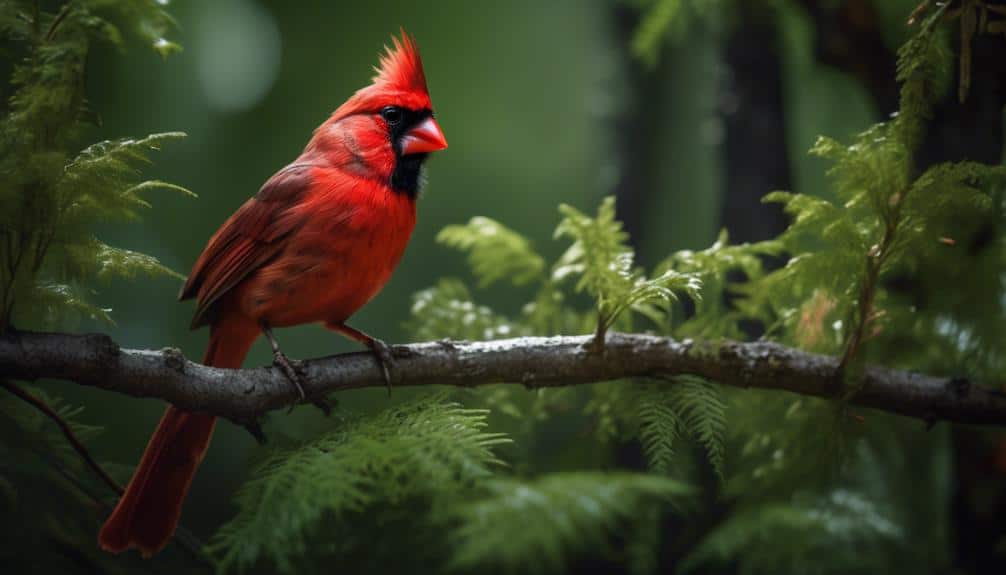
Conservation efforts aimed at protecting the habitats and ensuring the survival of red birds in Michigan are of utmost importance.
Red birds, such as the Northern Cardinal and Scarlet Tanager, play a vital role in the ecosystem as seed dispersers and insect controllers. However, their populations have been declining due to various environmental factors.
One major threat to their survival is habitat loss. Urbanization and deforestation have led to the destruction of nesting sites and food sources for these birds.
Additionally, climate change has also had a negative impact on their population. Rising temperatures and changes in precipitation patterns affect the availability of food and nesting conditions.
To address these challenges, conservation organizations are working tirelessly to protect and restore the habitats of red birds. Efforts include creating protected areas, implementing reforestation programs, and promoting sustainable land management practices.
Furthermore, public awareness campaigns are crucial in educating communities about the importance of red birds and their conservation.
Frequently Asked Questions
What Is the Average Lifespan of Red Birds in Michigan?
The average lifespan of red birds is influenced by various factors such as habitat preferences, food availability, and predators. Understanding these factors can provide valuable insights into the overall health and survival of red birds in Michigan.
Do All Red Birds in Michigan Have the Same Diet?
All red birds in Michigan do not have the same diet. Their feeding habits are influenced by environmental factors such as availability of food sources, seasonality, and habitat.
Are There Any Threats or Predators Specific to Red Birds in Michigan?
There are threats to red birds in Michigan, including predators such as hawks and cats. These predators pose a risk to their survival and affect their hunting patterns. It is important to understand and mitigate these threats for their conservation.
How Do Red Birds in Michigan Communicate With Each Other?
Red birds in Michigan communicate with each other through a combination of vocalizations and body language. They use different calls for various purposes, such as mating rituals and territorial disputes. Their communication methods are intricate and essential for their survival.
Are There Any Particular Behaviors or Habits of Red Birds in Michigan That Set Them Apart From Other Bird Species?
There are unique behaviors and habits of red birds in Michigan that set them apart from other species. For example, their migration patterns and nesting habits exhibit remarkable adaptability and survival instincts.
Conclusion
In conclusion, red birds in Michigan are a vibrant and captivating part of the state's avian population. With their striking red plumage and distinct characteristics, these birds are easily recognizable and admired by birdwatchers and nature enthusiasts alike.
Their preferred habitats, such as forests and wetlands, provide a perfect environment for nesting and breeding. Understanding their migration patterns is crucial for their conservation, as efforts to protect their habitats and promote sustainable practices are essential to ensuring their continued presence in Michigan's diverse ecosystem.

